Russian Knapweed
#FFFFFF
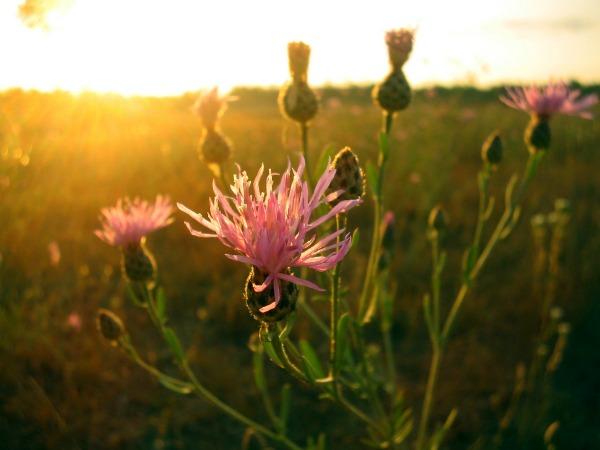
Russian knapweed develops on many soil types and is highly drought tolerant. The allelopathic properties of the plant allow it to absorb Zinc from the soil therefore creating a toxic environment for native forbs, grasses and grazing animals. Russian knapweed reproduces primarily through root system but still produces over 500 seeds per plant with a seed longevity in the soil for up to 2-3 years. Fragments of root of one inch or less can reproduce into a new plant from depths of six inches or less. Root growth per season can reach up to 10 feet allowing the plant to create monotypic stands invading areas of natural plant life with ease. Animals, especially horses, which graze Russian knapweed can experience physical dysfunction, neurological disorder and eventual death from consumption. Weed management, mowing – is effective if mown every 20 days for the full growing season for several seasons. Grazing- DO NOT GRAZE With HORSES, not effective control.
Herbicides: Always use in accordance with label, these suggestions are for HANDGUN APPLICATION ONLY.
Mix together: Milestone(Aminopyralid), 10 oz./50 gal
Plateau- (Imazapic), 12 oz./ 50 gal
Rangestar – (2-4D and Dicamba mix), 2 qt. / gal 50
Vapogaurd- (adjuvant) drift, vaporization, conditioning, 1qt./50gal
Loctite- (Sticker), 1 qt./ 50 gal
Puncturevine
#FFFFFF
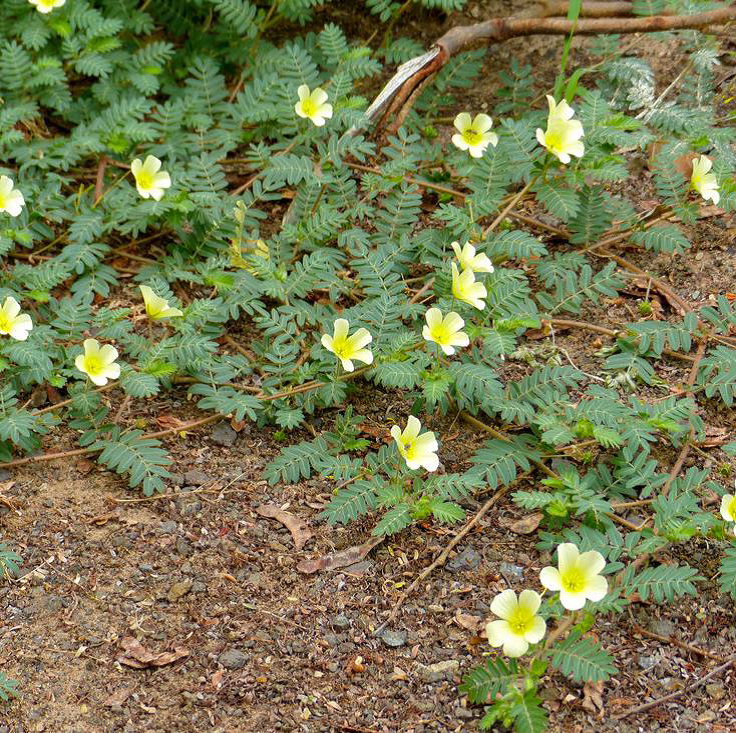
Puncturevine – Is one of the most annoying of the noxious weeds that humans encounter, when ingested in high quantities it is highly toxic to sheep and other livestock due to its saponin compounds. Seeds of the vine can last up to 6 years in the soil and can germinate within a few weeks of dispersal. Puncturvine only reproduces via seed, ideal conditions for seed germination is warm temperatures and wet/damp soil. Weed management: Mechanical hand pulling, shallow tilling and hoeing are effective if done before flowering stage and when population is low. Grazing, is not recommended due to the toxic nature of the plant.
Herbicides: Always use in accordance with label, these suggestions are for HANDGUN APPLICATION ONLY.
Mix together: Rangestar – (2-4D and Dicamba mix), 2 qt. / 50 gal
Vapogaurd- (adjuvant) drift, vapor, conditioning, 1qt./50gal
Loctite- (Sticker), 1 qt./ 50 gal
Perennial Pepperweed AKA - Tall Whitetop
#FFFFFF
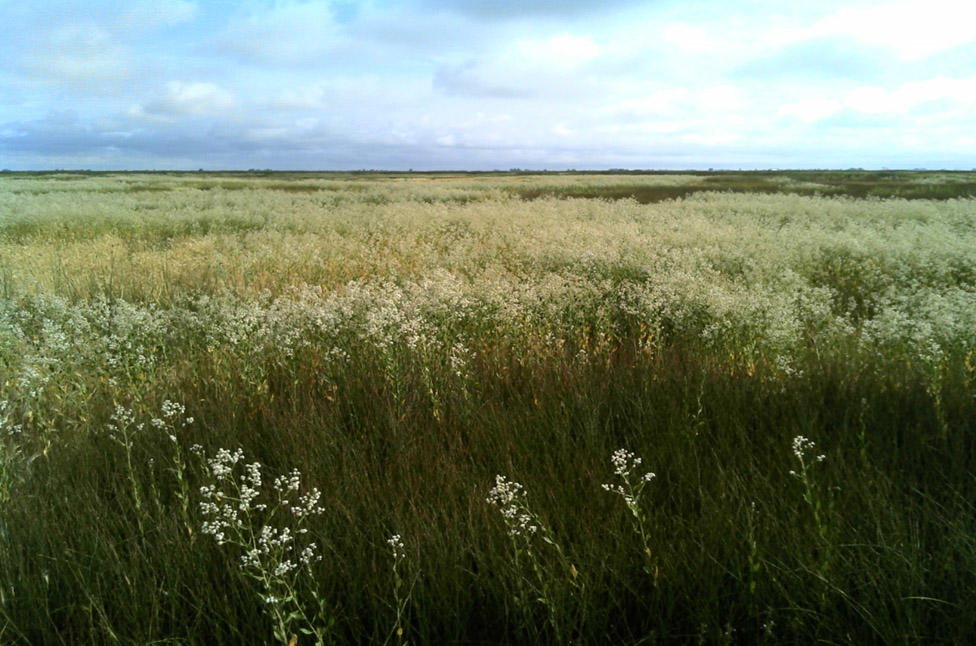
Perennial Pepperweed AKA - Tall Whitetop - can grow to a height of six feet tall and reproduces via both seed and root. Each plant produces
over 1,000 seeds per plant but seeds have been reported to not have the reproductive capabilities in comparison to the root. Most of the
plant’s root system grows within the first 2 feet of the soil but have been known to penetrate to a depth of 10 feet or greater and expands
at a rate of 10 feet per year. Root segments produce adventitious buds; pieces as small as 1/2 inch in length are capable of generating
new shoots. Perennial Pepperweed is also known to have Allelopathic (secretes toxins in the soil) properties which prevent propagation of desired plant life. Weed management. Mowing stimulates new growth in both root and stem, also allows regrowth to cut pieces producing additional plants.
Herbicides: Always use in accordance with label, these suggestions are for HANDGUN APPLICATION ONLY. Mix together:
Rangestar – (2-4D and Dicamba mix), 2 qt. / 50 gal
Plateau- (Imazapic), 12 oz./ 50 gal
Vapogaurd- (adjuvant) drift, vaporization, conditioning, 1qt./50gal
Loctite- (Sticker), 1 qt./ 50 gal
Do not shovel, disc, or pull as this stimulates root growth
Musk Thistle
#FFFFFF
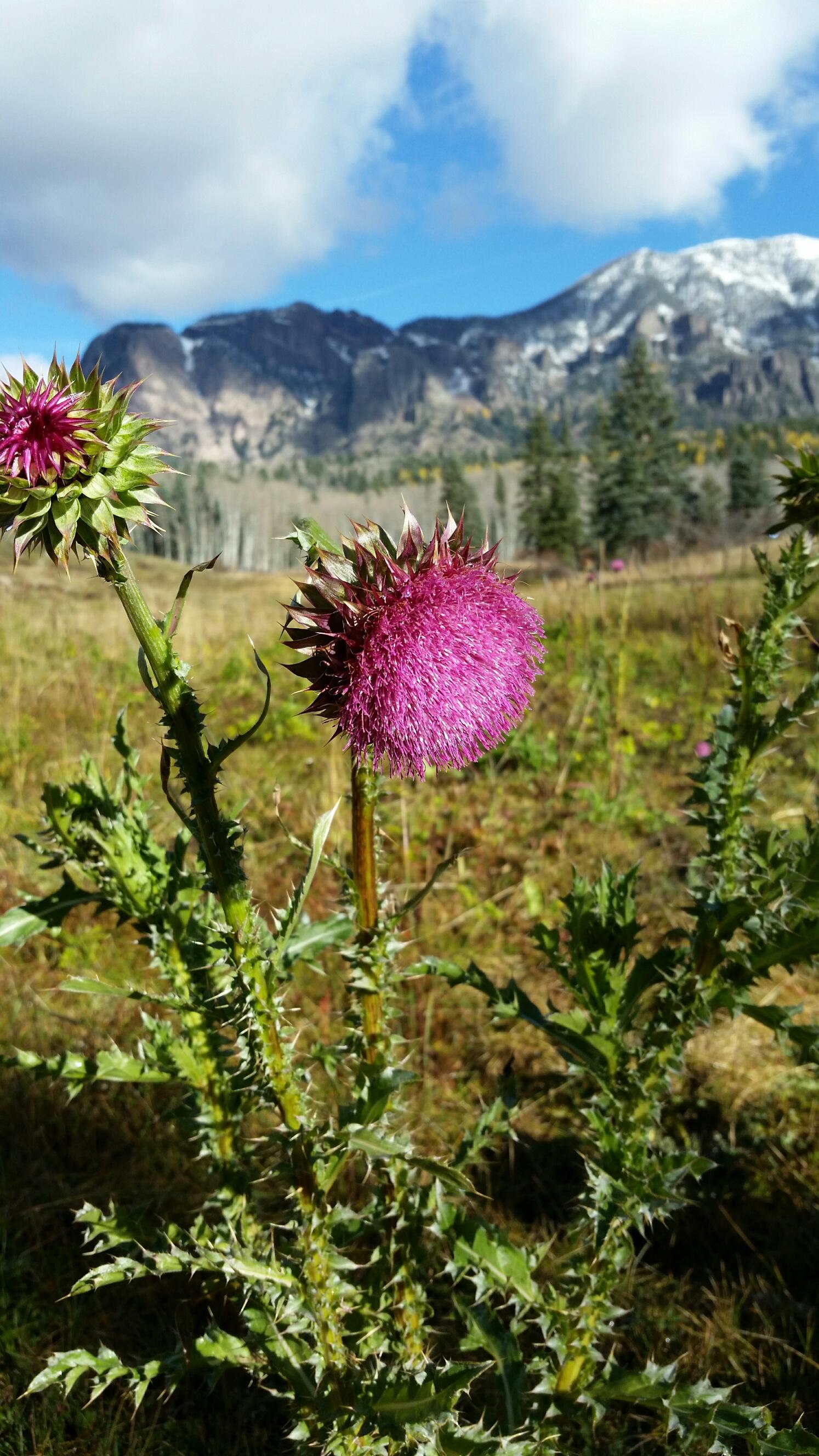
Musk thistle – is a winter annual or biennial that can grow up to 5 feet tall and form deep tap roots. Their foliage looks similar to the Canadian thistle but larger with different blossoms. With a blossom the average size of 3.5” this plant can produce anywhere from 10,000- 20,000 seeds. Musk thistle only reproduces through seed an only last a few years in the soil seed bank. Weed management: because musk thistle are not root propagated mechanical pulling, tilling, and shovel control are effective IF done before flowering stage preferably during rosette stage and the root is taken at about 4 inches below the ground level.
Herbicides: Always use in accordance with label, these suggestions are for HANDGUN APPLICATION ONLY.
Mix together: Milestone-(Aminopyralid), 10 oz./50 gal
Plateau- (Imazapic), 12 oz./ 50 gal
Rangestar – (2-4D and Dicamba mix), 2 qt. / 50 gal
Vapogaurd- (adjuvant) drift, vapor, conditioning, 1qt./50gal
Loctite- (Sticker), 1 qt./ 50 gal
Houndstongue
#FFFFFF
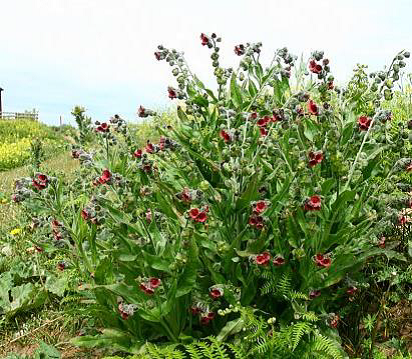
Houndstongue - Is a highly invasive weed that can form dense monotypic stands. Foliage, especially young leaves, and fruits contain pyrrolizidine alkaloids and are liver toxins in all livestock classes, especially horses when ingested over time or in a single large quantity. Plants have a distinctive scent that appease to deter animals from consuming live foliage, thus most poisonings occur when consume hay over time. Weed management - Digging and hand pulling can be very effective if done below the crown of the plant, but this must be done often as regrowth can occur. DO NOT GRAZE as this plant is toxic even to sheep. The Root Mining flea beetle is optional for a bio control method but due to the San Luis Valley climate the beetle may not survive.
Herbicides: Always use in accordance with label, these suggestions are for HANDGUN APPLICATION ONLY.
Mix together: Rangestar – (2-4D and Dicamba mix), 2 qt. / 50 gal
Plateau- (Imazapic), 12 oz./ 50 gal
Vapogaurd- (adjuvant) drift, vapor, conditioning, 1qt./50gal
Loctite- (Sticker), 1 qt./ 50 gal
Do not shovel, disc, or pull as this stimulates root growth
Hoary Cress Cardaria Draba
#FFFFFF
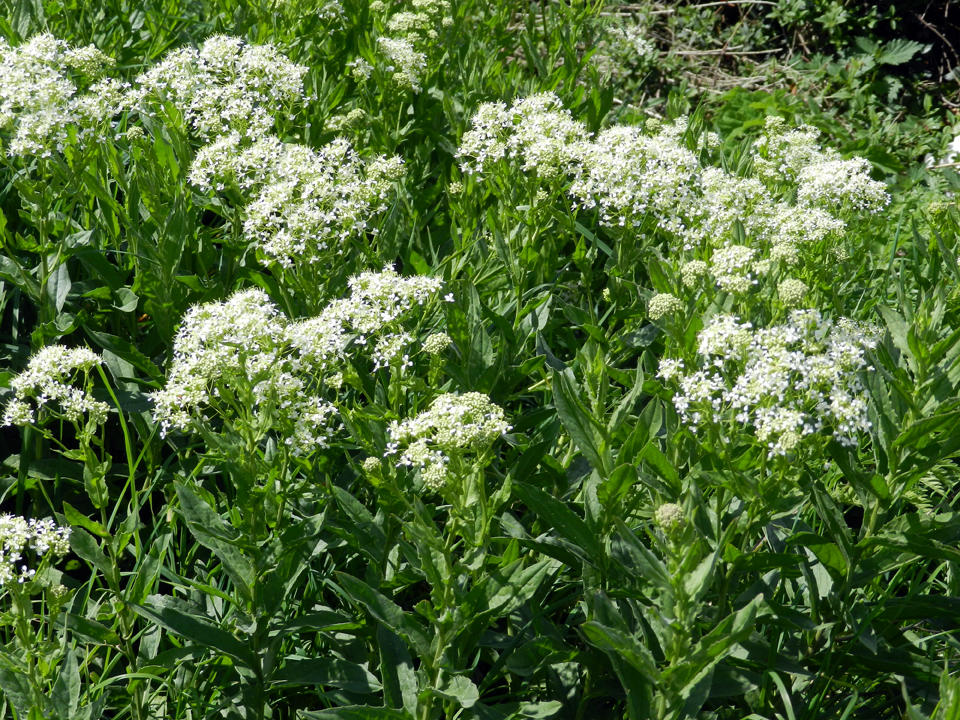
Hoary cress,( Short White Top), Cardaria draba- A non-native deep rooted perennial that thrives in a wide range of soil types, they grow to two foot tall and are extremely invasive. Hoary cress reproduces via both seed and root, with root being the primary reproduction source. One plant can produce from 1,200 to 4,800 seeds per plant with a soil seed bank longevity of three or four years. Within three weeks of germination the seed produces new rosettes which emerge within 3 ½ weeks and root shoots that have been documented to grow as fast as approximately 4 ft. in a season. A single plant can produce 450 new shoots in a single growing season. Weed management – Mowing in spring to keep from flowering and continue throughout growing season controls seed dispersal, but also stimulates roots. Grazing is effective to keep from flowering in spring, but is not effective for long term eradication. Herbicides, always use in accordance with label, these suggestions are for HANDGUN APPLICATION ONLY.
Mix together: Rangestar – (2-4D and Dicamba mix), 2 qt. / 50 gal
Plateau- (Imazapic), 12 oz./ 50 gal
Vapogaurd (adjuvant)drift, vapor, conditioning, 1qt./50gal
Loctite- (Sticker), 1 qt./ 50 gal
Do not shovel, disc, or pull as this stimulates root growth
Common Mullein
#FFFFFF
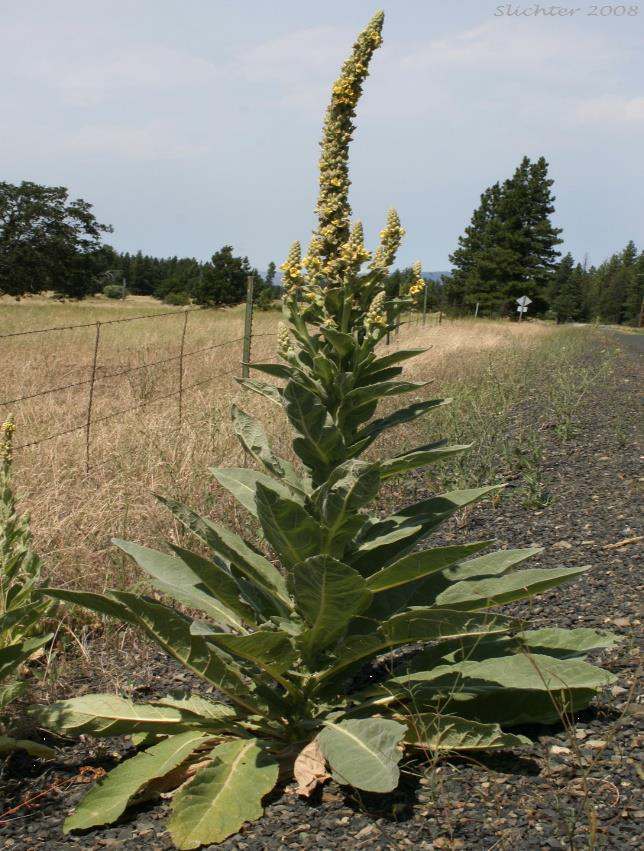
Common mullein- is a biennial or short-lived perennial that are highly invasive and non-palatable for livestock. Often these plants can produce over 100,000 seeds per plant with a seed longevity in the soil of over 100 years. Populations can spread quickly and prefers, but is not limited to disturbed and/or unpopulated bare ground areas. Weed management: Mechanical, hand pulling, hoeing are very effective methods of control for common mullein, but must be done before flowering stages. Mowing and tilling are not recommended control as the plant tends to grow back quickly and the tilling allows opportunity for regrowth of seeds.
Herbicides: Always use in accordance with label, these suggestions are for HANDGUN APPLICATION ONLY.
Mix together: Rangestar – (2-4D and Dicamba mix), 2 qt. / 50 gal
Milestone-(Aminopyralid), 10 oz./50 gal
Vapogaurd- (adjuvant) drift, vapor, conditioning, 1qt./50gal
Loctite- (Sticker), 1 qt./ 50 gal
Canadian Thistle (Cirsium Arven)
#FFFFFF
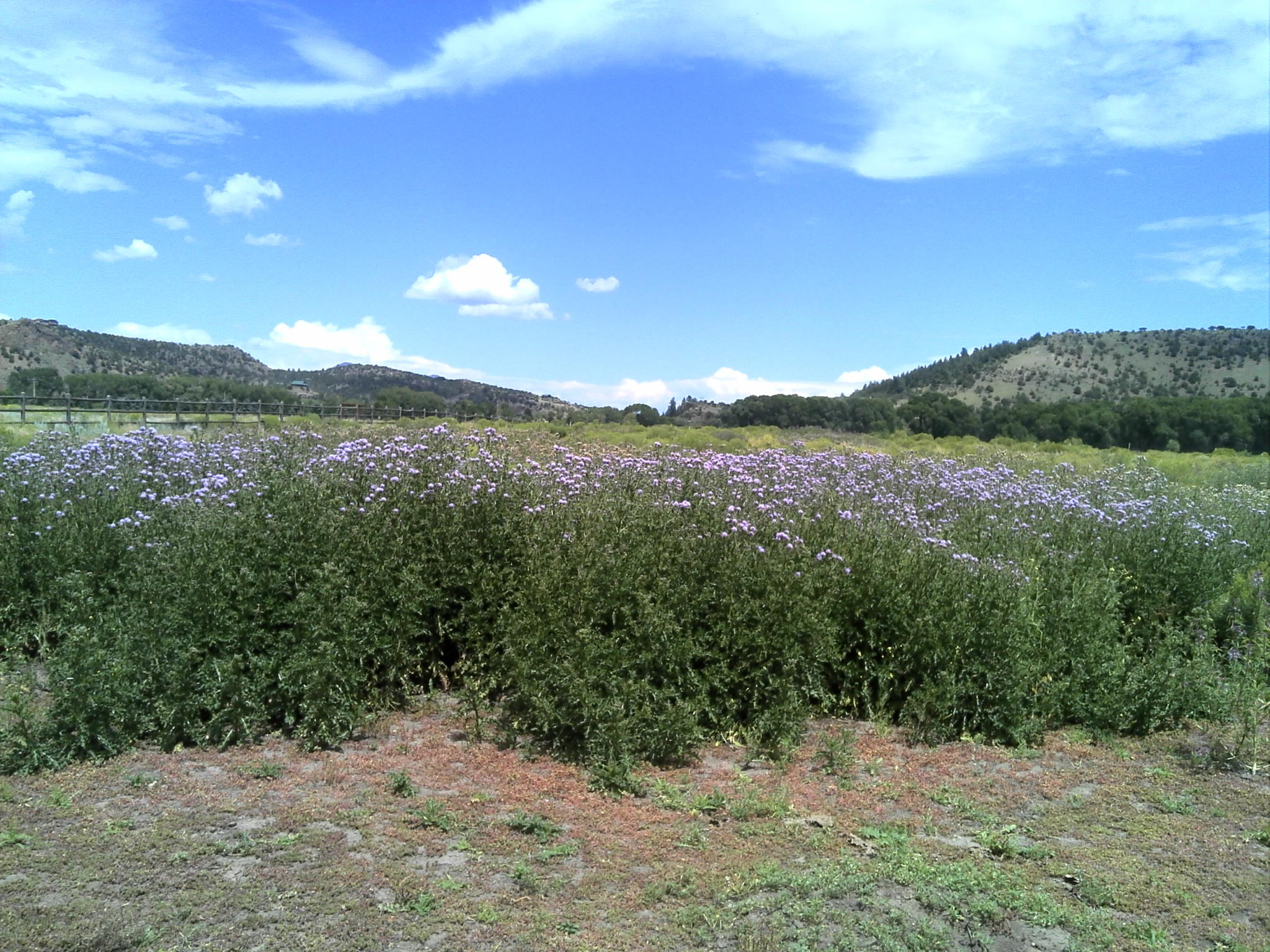
Canadian thistle, Cirsium arven- is a nonnative, deep-rooted perennial that spreads by seeds and aggressive, horizontal roots (rhizomes) that can grow 15 to 30+ feet in depth. Canada thistle can produce about 1,000 to 5,000 seeds per plant, and seeds can survive in the soil for 20 years or more. Typically, it reproduces by root and grows about 6 feet in a season through a creeping root system, quickly forming dense monotypic stand. Every piece of root, from 2 cm in length, is capable of forming new plants. Canadian thistle also hosts several agricultural
disease and pests such as sod-web worm, bean aphid, stalk borer, cucumber mosaic virus. Weed management - Mowing is effective
if mown every 20 days for the full growing season for several seasons. Grazing- In the spring and summer with fall application of herbicide is very useful technique for eradication.
Herbicides: Always use in accordance with label, these suggestions for HANDGUN APPLICATION ONLY.
Mix together : Milestone-(Aminopyralid), 10 oz./50 gal
Rangestar – (2-4D and Dicamba mix), 2 qt. / 50 gal
Vapogaurd- (adjuvant) drift, vaporization, conditioning, 1qt./50gal
Loctite- (Sticker), 1 qt./ 50 gal
Do not shovel, disc, or pull as this stimulates root growth